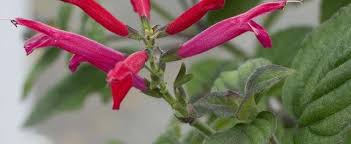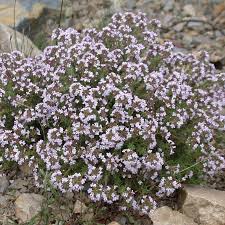New Herb Collection – Tregothnan Botanical Gardens, Truro Cornwall

I have received a package of herbs from Smartplantapp.com that was sourced from www.tregothnan.co.uk who apparently are the only tea growers in Cornwall. They have been established since 1999 and boast Europe’s Largest Tea Garden.

My package was a selection of herbs that Tregothnan grow both for sale in their gardens and for use in their tea infusions which they sold at the best hotels and stores before the Pandemic arrived.
Tregothnan Botanical Gardens
Tregothnan means The house at the head of the valley and from the look of this photo they aren’t exaggerating. It looks beautiful.

Everything we do here at Tregothnan brings us back to the magnificent botanical garden. It provides us with produce and inspiration; our range of English estate teas and herbal infusions are grown here, our Manuka and wildflower honeys are produced here, our seasonal British flowers and foliages are sourced here. The gardens, both in Cornwall and in Kent, are the beating heart of the estate and we are constantly inspired by their fecundity and resilience.

Tregothnan is the only place outside of New Zealand to grow the Manuka plant (Leptospermum scoparium), which have been recorded on the Estate since the 1880s. Tregothnan’s tea bushes (Camellia sinensis) are surrounded by Manuka plantations, in part to protect the tea from the prevailing winds due to Manuka’s thick, coarse characteristics. The Manuka bushes provide essential shelter for tea but also a delicious treat for the bees whose hives are nestled in amongst the kitchen garden.
Tregothnan also keep their own honey bees and produce and sell their own honey. Its a little expensive for me but I’m sure its delicious.

My tiny package of herbs arrived and included six young plug plants of Marjoram, Thyme x 2, Sage x 2 and Hyssop. Plus a complimentary tea bag.
I have planted them up straight away into a large blue ceramic planter that I have had by my kitchen door for many years. It was bought for me by the children one Mother’s Day and has been in the same place since then. Since Adam died it had contained Spring bulbs and Viola Sororia Freckles which have both multiplied again and again and this year the plants needed splitting and the soil refreshing . I have left a few of the viola in there and arranged the herbs around the pot. There is plenty of space for them to spread as it is a very big container.
Hyssopus officinalis Blue

I have never grown or cooked with this herb so a little research was needed. Apparently Hysoppus officinalis is a versatile herb. It can be planted in the border or used in the kitchen. Bees and butterflies are attracted by Hyssop’s electric blue flowers. The flowers are aromatic and long lasting and the foliage is evergreen so it could be a real bonus in the blue pot outside the kitchen door.
Although not well known Hyssop is a useful culinary herb used sparingly. Chop and scatter young leaves onto salads, meat or oily fish dishes or use to flavour soups, stews and fruit dishes. Hyssop is said to aid the digestion of fatty or rich foods.
Hyssop also has medicinal properties. A tea made from the dried flowers infused with honey is soothing for coughs.
Origanum Vulgare Aureum

The label says that Golden Marjoram has brilliant golden foliage and is of a low growing habit. It produces pink flowers in late summer, dies back over winter and reappears in spring. It advises cutting back old dead flowers in early spring. This woody perennial can be propagated by cuttings of non flowering shoots in mid-summer or by division in the autumn or spring.
Fresh or dried marjoram leaves are used to season soups, sauces, salads, fish, legumes and meat dishes. It is also great in marinades and may fragrance vinegars, oils and liquers. An essential oil, used by the pharmaceutical industry, is made from the foliage. Some medicines utilise marjoram in healing for respiratory and digestive system diseases. Its greens contain taurine, vitamin C and carotenes.
Salvia Oficinalis
Salvia officinalis is a perennial, evergreen subshrub, with woody stems, grayish leaves, and blue to purplish flowers. It is a member of the mint family Lamiaceae and native to the Mediterranean region, though it has naturalised in many places throughout the world.
The Latin name salvia officinalis is derived either from the Latin salvus, which means healthy, or salvare, meaning to heal. The name officinalis is derived from officina, which stands for the traditional storeroom in an apothecary where the herb was kept. It also refers to the fact that the herb is officially used as a medicinal plant.
During a major outbreak of plague in 1630, faith in the healing effects of sage was so strong that thieves in Toulouse rubbed a sage/herb/vinegar mix into their skin to protect themselves against infection before going out into the night to rob cadavers. When caught, they were told that their lives would be spared if they revealed the secret of how they inoculated themselves. Ricola.
My two Sages are a little different to the common sage. Sage Tangerine is described as a semi-hardy sage with bright green foliage and a strong citrus aroma. Sage Icterina Gold is described as a perennial with gold and green variegated leaves on a rough but keenly scented upright foliage.

Salvia elegans, commonly called pineapple sage or tangerine sage, is a perennial shrub native to Mexico and Guatemala. It inhabits Madrean and Mesoamerican pine-oak forests. The foliage of this decorative culinary sage has a tangerine-like scent, while the summer flowers add a vibrant shot of colour to borders or pots. Both the foliage, particularly the younger leaves, and the flowers can be used to dress salads, while the leaves can be brewed for tea.
Sage has been used for centuries as a culinary herb, Tangerine Sage is grown as a tender perennial herb plant primarily for its flowers, which are highly attractive to bees and butterflies. However, the leaves and flowers can be used to flavour food and drinks. The leaves can be snipped into salads and the flowers make an attractive addition to a salad too. In addition the leaves add a herby tangerine taste to fruit drinks and cocktails or on their own make a refreshing tea.

Golden Sage is a very popular herb. This variety has a milder taste in comparison with common sage . It is also a great companion with rich foods as it can aid digestion.
Golden sage can be propagated from cuttings. Many growers say Icterina does not bloom and is strictly an ornamental but the plant produces purple flowers in late spring. Seeds can be unreliable so growing golden sage through spring cuttings is a quick and easy way to make more of these lovely little shrubs. Root cuttings in sterile potting soil and keep evenly moist. To enhance rooting, provide heat and humidity by placing a bag or clear cover over the plant. Remove the cover once per day to release excess moisture and prevent root rot.
Read more at Gardening Know How: Golden Sage Care: How To Grow A Golden Sage Plant https://www.gardeningknowhow.com/edible/herbs/sage/grow-golden-sage-plant.htm
Thymus Vulgaris
Thymus vulgaris is a species of flowering plant in the mint family Lamiaceae, native to southern Europe from the western Mediterranean to southern Italy. Wikipedia
Thyme is thought to have the powerful ability to kill off bacteria and viruses and should be taken at first signs of a cold or illness. Thyme does contains antiseptic, antiviral, antibacterial, carminative, diaphoretic and expectorant properties which supports healing throughout the entire body. A very useful herb to have in the garden.
The two tiny starter plants of Thyme in my package are Thymus Vulgaris, common thyme, and Thyme Coccineus.


Thyme Coccineus, the second variety is a creeping woody based perennial.
| Thymus praecox Coccineus or Creeping Thyme with a degree of spicy fragrance. This flat-growing Thyme features fragrant dark green leaves, smothered by bright magenta-red flowers in early summer. A strong grower, ideal as a drought-tolerant lawn substitute or for planting between slabs. Creeping Thyme is easily divided in spring or early autumn and even small pieces will take root and grow. It is evergreen and attractive to butterflies. |







